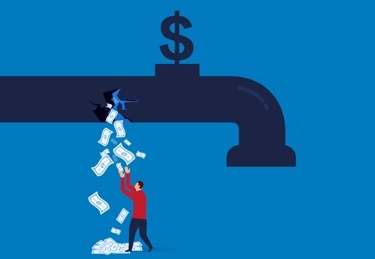Peter Warburton – November 5, 2020
Wastefulness is the opposite of productivity: doing less with more, as compared to doing more with less. The public policy response to Covid-19 in the US and UK has bypassed budgetary controls and the usual audit process, paving the way for extraordinary state interventions and expenditures. “Whatever it takes” has been augmented by “whatever the cost”. During the 2008-10 slump, some employers agreed to pay their workforces in advance for hours that they would contract to work when activity recovered. Government furlough schemes have asked for nothing in return. The impact of “something for nothing” schemes is to lower productivity and inflate costs. Preliminary US data for the third quarter provides an early glimpse of the inflationary consequences.
Unpreparedness for a global pandemic has been the trigger for the relaxation of budgetary controls by an administration that, in election year, was keen to write the cheques to make it go away. Like frantic philanthropists, eager to make their mark, governments around the world have been largely indifferent to the wastefulness of their endeavours. They perceive that their political opponents see no mileage in criticising their lavish expenditures: indeed, their adversaries would relish the opportunity to exercise such liberality with the public purse, were they to gain office.
In our June Global Inflation Perspective, we contended that nominal recovery would outstrip real recovery. Governments can act only on nominal variables: they can mandate spending and procure resources, but they cannot raise the output level of the private sector. The decision to quicken the pace of activity is out of their hands. Our thesis was that the government’s eagerness – and sometimes desperation – to see a normalisation of economic activity would send nominal growth running well ahead of a stilted private sector output recovery. The early evidence is consistent with this expectation.
In the third quarter US national accounts, we observe two inflationary narratives at work: the impact of supply side constraints and the consequences of government wastefulness. As evidence of the former, consider that, after 13 consecutive quarters of deflation in consumer durable goods the annualised inflation rate jumped to 8.5 per cent in Q3. Even consumer services’ inflation rebounded to a 2.8 per cent annualised pace. The deflator for residential investment leapt from 1 per cent in Q2 to 9.6 per cent in Q3. In figure 1, the strength of the rebounds in private consumption and investment has propelled the GDP deflator to a 3.6 per cent pace, the fastest since 2007Q1.
US government departments and agencies are no strangers to inflationary spending. The deflator for public expenditure reached a 4.4 per cent pace as recently as 2018. However, the speed of reversal in public sector inflation trends is unusual, indicative of a dramatic shift in policymaking. Figure 2 shows that the federal spending deflator rebounded to 1.6 per cent in Q3; state and local spending to a 4 per cent pace. Whereas private sector employment headcount was 6.8 per cent lower in September 2020 than a year earlier, government employment was only 3.7 per cent lower. Swathes of lower-paying private sector jobs have been eliminated, but higher-paid jobs have fared better. Hence the jump in the pace of average weekly earnings shown in figure 3.
A key critique of state-directed economic activity is that it is unnecessarily expensive and frequently exhibits a disdainful attitude towards value-for-money. While valiant attempts have been made to introduce commercial disciplines into public procurement operations, the state has not shaken its reputation as a wasteful, occasionally reckless, shopper and willing sponsor of lost causes. There is more to inflation than the CPI.
Figure 1
Data source: US Bureau of Economic Analysis, NIPA table 1.1.4
Figure 2
Data source: US Bureau of Economic Analysis, NIPA table 1.1.4
Figure 3

Source: FRED

